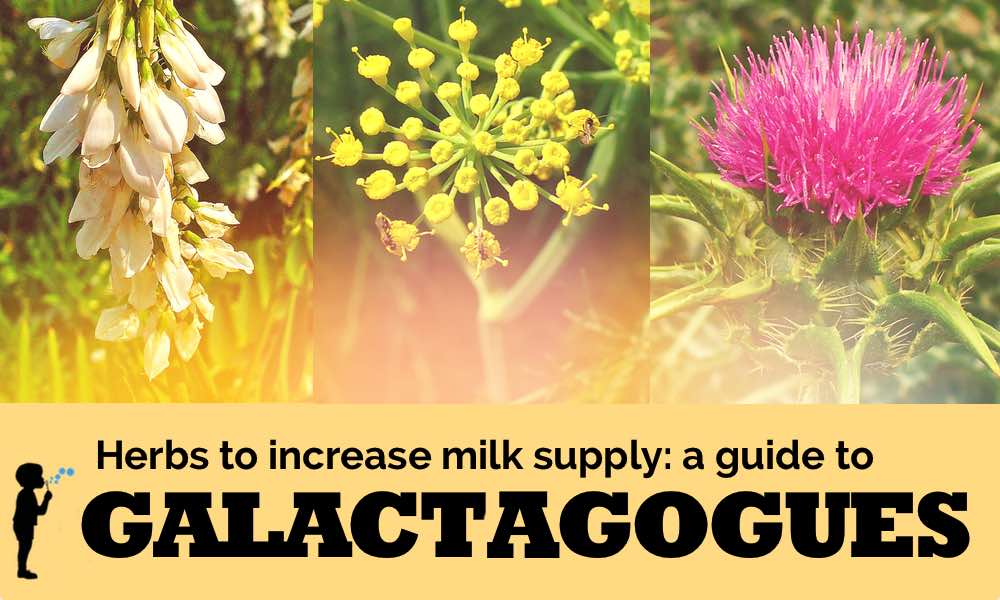
Herbs to increase milk supply: a guide to galactagogues
Worried about low breastmilk supply? This post will cover herbs to increase lactation. Herbs that increase breast milk production are called “galactagogues.” (“Galacta” = milk, “-gogue” = producer or supplier)
Is your milk supply actually low?
But first before we get started – is your milk supply actually low? Many women mistakenly believe that their breast milk supply is low when it is not. See this wonderful article from kellymom.com about breastmilk supply issues. There is no need to supplement with galactagogues if breastmilk supply is normal!
(If you need a good introduction to Breastfeeding, including an answer to all your basic questions, check out this post from Babble – All About Breastfeeding.)
Second – it is incredibly important to address the underlying cause of insufficient breastmilk supply first! Most mothers do not need herbs to stimulate milk production – instead they need rest, relaxation, hydration, nutrition, and a baby who has an excellent latch and sucking reflex. Especially focus on hydration – remember that it is impossible to make sufficient milk if you are dehydrated.
Again, I recommend reading KellyMom.com for more information about breastmilk supply issues and how to uncover the underlying cause. KellyMom has an amazing number of articles discussing everything from perceived low milk supply, to improving latch, to pumping and more.
Okay – with all that said, if all of the above is normal or has been addressed and you still need to increase milk supply – then check out the rest of this article!
Herbs:
Below are listed the herbs in “monograph” form. The monograph lists the part of the plant used, the constituents, actions of the plant, the dose used, and and relevant safety data. It is very important to pay attention to all these details! Pay attention to “Part of the plant used” – for most herbs the active constituent is found in only one part (e.g., the root or the seed). “Constituent/s” refers to the plant chemicals that affect the human body. I promise I’ll write a guide to plant constituents soon!
Note: “Solvent” refers to the combination of water and alcohol used to extract the plant constituents (NOT chemical solvents, that would be stupid). Some plant constituents are best extracted in low alcohol (high water) combinations, whereas some are best extracted in medium or very high alcohol (low water) combinations. This is very important if you are making your own tinctures; remember that 80 proof vodka, for example, is only 40% alcohol and would be a bad choice for making a Hops tincture.
ALWAYS consult a knowledgeable physician or herbalist before using herbs medicinally. This is especially true if you are taking medications, are pregnant, or are nursing (which you probably are if you’re reading this post).
Galega officinalis – Goat’s Rue
Part of the plant used: above-ground parts (not roots)
Constituents: alkaloids and related nitrogen-containing compounds
Actions/Use For: Goat’s Rue is a potent galactagogue. It is also insulin-sensitizing and hypoglycemic – Naturopathic Physicians often use this for diabetic patients to lower blood sugars. Because of this it can cause low blood sugar even in non-diabetic patients which can be uncomfortable for some people. Goat’s rue is also a phytoestrogen, is mildly anti-bacterial, and may increase lipolysis (fat burning).
Dose/form: tincture (1:3 ratio of herb:solvent in 30% alcohol) 1-2 ml three times per day. Capsules: 500 mg four times per day.
Safety: use with caution in pregnancy – insufficient information on use in pregnancy.
Drug interactions: use extreme caution if patient is diabetic, may interact with oral hypoglycemic medications (like Metformin).
Trigonella foenum-graecum – Fenugreek (seed)
Part of the plant used: seed
Constituents: complex carbohydrates, fatty acids, alkaloids (bitter – note de-bitterized fenugreek is not active)
Actions/use for: Fenugreek is a powerful galactagogue. It is also a carminative, which means it eases intestinal cramping and gas. It is traditionally considered cardioprotective. It can also lower lipids and blood sugars. It is often used by herbalists and Naturopathic Physicians for diabetes and high cholesterol.
Dose/form: must use food-level doses for Fenugreek to be effective (50-100 grams per day). Best given as a powder mixed with food (in curry spices, etc). In capsule form it must be taken in high doses and frequently: 1200 mg four times per day – this usually equates to 2 capsules of powdered herb four times per day. Can be combined with other herbs as well.
Safety: generally very safe. Contraindicated in early pregnancy in excessive doses. Can be somewhat stimulating to the gastrointestinal system, so do not use if the patient has an active peptic ulcer or increased stomach acid. Side effects may include stomach upset or symptoms of low blood sugar – these may be bothersome enough to stop using the herb.
Humulus lupulus – Hops
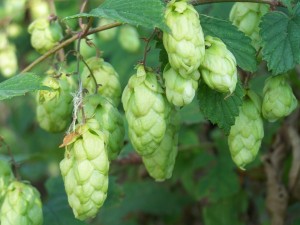 Part of the plant used: the strobile (the scaly fruit)
Part of the plant used: the strobile (the scaly fruit)
Constituents: resin, flavonoids, prenylated chalcones, iso-alpha acids.
Actions/use for: Hops are a moderate galactagogue. They are a powerful phytoestrogen and moderate nervine. (Nervines are herbs that act upon the nervous system – usually this means they are sedating or calming, as in this case.) Hops are also anti-viral, anti-neoplastic (anti-cancer), and can lower blood sugar. Hops are frequently used for menopausal patients with hot flashes and vaginal dryness. Note that men should not excessively consume hops because it can cause gynecomastia (breast tissue growth).
Dose/form: Tincture (1:3 ratio of herb:solvent in 50-75% alcohol. Must use high alcohol-content to fully extract the active constituents. This makes this herb very “strong” tasting in tincture form because the tincture is quite boozy. Water down with a little water or “burn off” the alcohol by place the dose in a little boiling water, then cool to drink.) 3-5 ml three times per day, or 3-5 ml 30 minutes before and at bedtime for insomnia. Pillows filled with dried hops can be slept on to improve sleep as well. Other forms: beer! Craft-brewed beer, especially IPA is high in hops. Of course one would need to be extremely careful about beer consumption while nursing. Remember that there is no need to “pump and dump” after drinking alcohol, you just need to wait until all the alcohol is out of your system before nursing your baby.
Safety: generally safe. Chronic overdose may cause estrogen-overdose symptoms like low libido, irritability and edema. Side effects are nausea/vomiting. Do not give to patients who have gallstones, acute infectious diarrhea, or active peptic ulcer.
Urtica dioica – Stinging Nettles
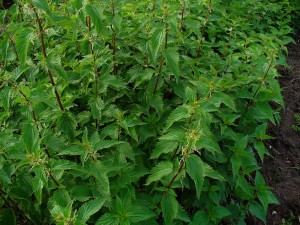 Part of the plant used: LEAF. PLEASE NOTE: use the LEAF, not the ROOT or the SEED! Urtica root and Urtica seed are amazing as well, but they do something completely different. Read the label of your tincture/capsule/tea package carefully to make sure it says LEAF.
Part of the plant used: LEAF. PLEASE NOTE: use the LEAF, not the ROOT or the SEED! Urtica root and Urtica seed are amazing as well, but they do something completely different. Read the label of your tincture/capsule/tea package carefully to make sure it says LEAF.
Constituents: flavonoid glycosides, caffeic and malic acid, minerals, vitamins, chlorophyll, sulphur, protein.
Actions/use for: Nettles are truly an amazing herb. They have a diuretic quality without depleting potassium, are inflammation modulating, and are nephrorestorative (kidney function restoring). Freeze dried nettle capsules are amazing for allergies. Nettle tea is considered “nutritive” as it is very high in minerals. (The original multivitamin!) Nettles have been traditionally used for malnourishment, nerve pain, strengthening of the musculoskeletal system, and for systemic inflammatory diseases. Best of all – they also stimulate milk production. (Maybe simply because they are so nutritious!)
Dose/form: Tincture (1:2 or 1:3 herb: solvent ratio in 25-30% alcohol, or as a glycerite 1:2 or 1:3 in 75% glycerine) 4-6 ml three times per day. For lactation I highly recommend consuming in tea form (this will extract the most minerals): 5 grams of tea steeped in 8 oz hot water for 10-15 minutes, drink 1 cup three to four times per day. Tastes delicious mixed with lemon balm and spearmint teas, and can also be mixed with other lactation-supporting herbs like alfalfa, red raspberry leaf, fennel, oat straw and others. Raw fresh nettles can also be cooked in soups and stews (best to use springtime nettles that are tender and delicious). Remember if you harvest fresh nettles to use thick rubber gloves to avoid the sting.
Safety: contraindicated (not to be used) in patients who have blocked ureters (severe kidney stones). Otherwise very safe, considered by most herbalists to be safe throughout pregnancy and breastfeeding.
Foeniculum vulgare – Fennel
Constituents: volatile oils, phenolic acids, furanocoumarins, fixed oils
Actions/use for: Fennel is a tasty moderate galactagogue. It is also a mild expectorant (good for thick, sticky coughs). It is antispasmodic and great for colic, gas and irritable bowel-like symptoms. It is a great phytoestrogen and has been traditionally used to treat women’s menstrual symptoms like amenorrhea (absent monthly flow), small breasts (!), and low libido.
Dose/form: Tincture (1:2 or 1:3 herb:solvent ratio in 50-70% alcohol) 2-4 ml three times per day, or 2 ml up to 5 times per day. Mixes well with other herbs in a formula because it is so tasty! (Note: when using in a formula you would decrease the total dose – consult an herbalist or Naturopathic Physician if you are making your own formula.)
Safety: contraindicated in GERD/heartburn – it relaxes the lower esophageal sphincter which can make reflux symptoms MUCH worse. This is true for infants with reflux too (products like “Colic Calm” with Fennel will make reflux symptoms worse). Do not use fennel essential oil internally, overdose could be toxic.
Silybum marianum – Milk thistle
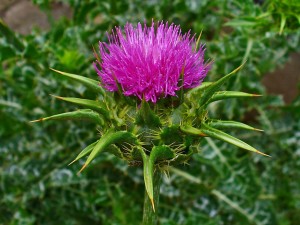 Constituents: Lignan – silymarin including silibin, silychristin, silydianin.
Constituents: Lignan – silymarin including silibin, silychristin, silydianin.
Actions/use for: Milk thistle is probably best known for its liver protective (hepatoprotective, hepatotrophorestorative) effects. It is also a cholegogue and choleretic, meaning it helps stimulating bile production and elimination. It is a potent antioxidant and is antiviral. Milk thistle is the backbone in any treatment plan that includes detoxification (especially heavy metal and solvent detoxification), as it prevents liver damage when toxicants are mobilized. (This is why you NEVER do a detox without consulting a physician, moving heavy metals and solvents out of tissues has the potential to create irreversible tissue damage). There is a lot of good research about the use of Milk Thistle to prevent liver failure after ingestion of toxic mushrooms (Amanita or “toadstool” mushrooms). Milk thistle is also a reasonably good galactagogue as well!
Dose/form: milk thistle does NOT tincture well. I highly recommend avoiding tinctures of milk thistle. Instead use tea, capsule or whole ground herb. Tea: 1/2 teaspoon per cup hot water, infuse 15039 minutes, drink 1/2 – 1 cup of tea three times per day. Can also take 400-500 mg standardized Milk Thistle Extract (70% silymarin) per day (capsule form). With capsules you really want to take a high quality, reputable product that you get from your physician or nutritionist – there are many knock-off products that claim to have Milk Thistle in them and instead are capsules of asparagus. What a waste of money!!!
Safety: generally safe, but definitely avoid in patients who have a gallstone of unknown size, as it can cause a severe gallstone attack (which is potentially life-threatening if it lodges in the wrong place). Side effects can include diarrhea or nausea from increase bile production/flow.
Conclusion (and other ideas)
There are many, many more herbs that have “galactagogue” effects. Honorable mentions: Borage, Caraway, Coriander, Dandelion, Dill, Garlic, Red Raspberry Leaf, Marshmallow Root, and Red Clover. These definitely aren’t my favorites, for various reasons (Red Rapsberry leaf is quite astringent, for example, and actually has the potential to decrease supply, Garlic can increase colic in babies, etc, etc). Chaste Tree Berry is also listed as a galactatogue, but this is only at very low dosages, I would use with great caution as a known effect of Chaste Tree Berry is to decrease prolactin levels, which is exactly the opposite of what we want for a nursing Mom.
Last Honorable Mention: Oats! (Avena sativa) Oats are an excellent galactatogue, and though they can be used in herb form (milky oat seed tea, for example), they taste much better eaten as oatmeal or oatmeal cookies. Yum! There are lots of fun “lactation cookies” you can purchase or find recipes for. Frankly, it’s probably a LOT cheaper to make your own regular ‘ole oatmeal cookies at home. Make sure to choose gluten-free oats if you have a sensitive stomach (or sensitive baby).
So what does Dr. Erika recommend? My favorite tea blend is Traditional Medicinals Mother’s Milk Tea. I like the company because they ensure really high quality herbs, and because the teas are tasty. (No, they didn’t pay me to say that, though that is an Amazon link.) The trick is to drink a LOT of tea – one cup per day just isn’t going to cut it. It also helps Moms stay hydrated and keep up their minerals, which I think is a double bonus.
Good luck my lactating friends!
Image credits:
“Galega officinalis 002” by H. Zell – Own work. Licensed under CC BY-SA 3.0 via Wikimedia Commons.
“Junger Bockshornklee” by Yak. Licensed under CC BY-SA 3.0 via Wikimedia Commons.
“Humulus lupulus“. Licensed under CC BY-SA 3.0 via Wikimedia Commons.
“Urtica dioica 001” by H. Zell – Own work. Licensed under CC BY-SA 3.0 via Wikimedia Commons.
“Foeniculum vulgare 003” by H. Zell – Own work. Licensed under CC BY-SA 3.0 via Wikimedia Commons.
“Silybum marianum 0003” by H. Zell – Own work. Licensed under CC BY-SA 3.0 via Wikimedia Commons.
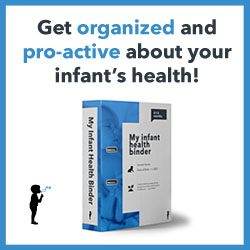
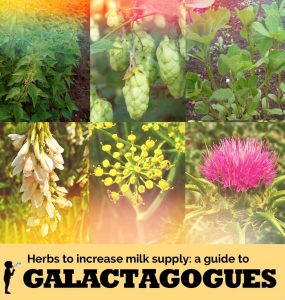
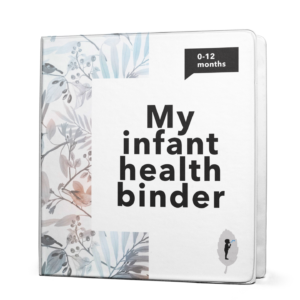
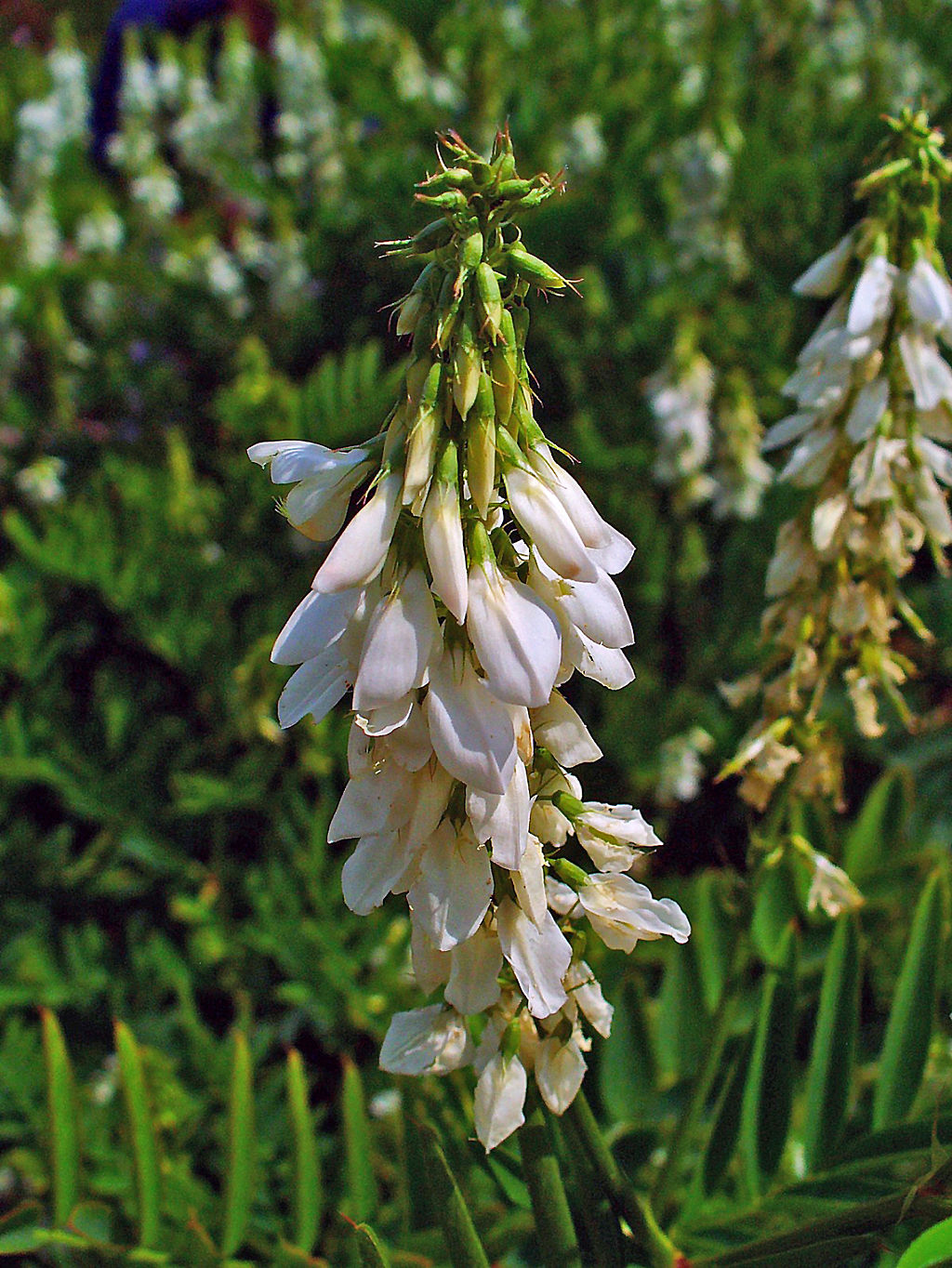
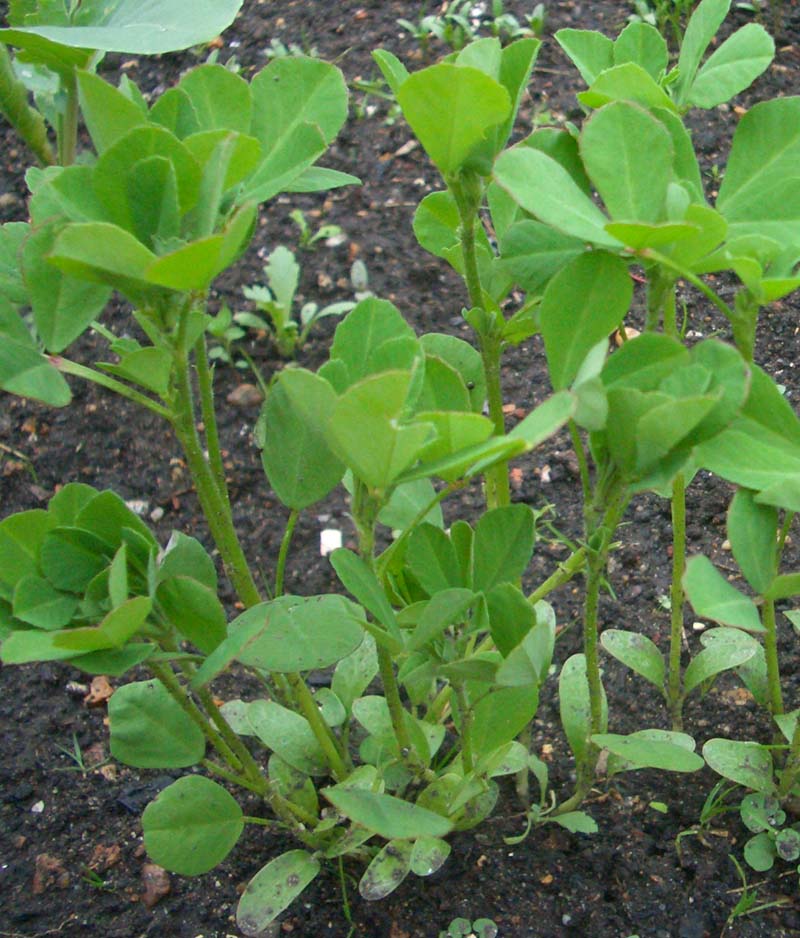
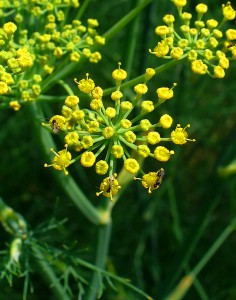

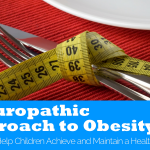
Pingback: Herbs to increase milk supply: a guide to galactogogues | Diet Balance
October 21, 2015 at 10:07 am